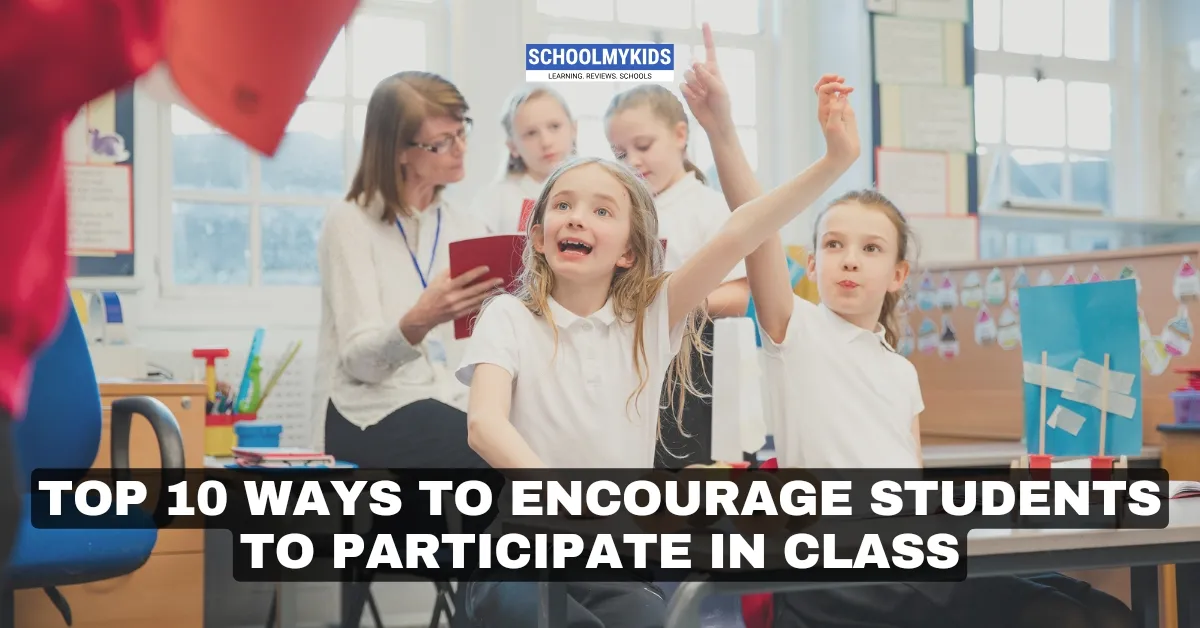It's a common concern for parents: their child seems disengaged in school and reluctant to speak up or contribute to discussions. This can be a source of frustration and worry, leading to questions about their child's social skills, self-esteem, or even academic abilities. By addressing these issues with thoughtful teaching strategies, we can create an environment that encourages student engagement. But before we discuss strategies for encouraging class participation, let's explore some of the underlying reasons why students might struggle to engage in the classroom.
The Psychology of Participation
Class participation is more than just raising your hand. It's a complex interplay of factors, including:
- Fear of Failure: Many children are afraid of making mistakes or looking foolish in front of their peers. This fear can be particularly pronounced for shy or introverted students.
- Lack of Confidence: Children who doubt their abilities or knowledge may hesitate to share their thoughts.
- Social Anxiety: Some children may experience social anxiety, making it difficult for them to interact with others in a group setting.
- Negative Experiences: Past experiences of being ridiculed, ignored, or punished for speaking out can lead to a reluctance to participate.
- Learning Style Mismatch: If a child's learning style doesn't align with the teacher's teaching style, they may feel disengaged or confused.
Teaching Strategies to Encourage Class Participation
Understanding these underlying factors can help us develop effective teaching strategies to encourage class participation. Here are some approaches that go beyond the typical "ask more questions" or "provide positive reinforcement" advice.
Create a Safe and Supportive Environment
The first step in encouraging participation is developing a classroom atmosphere where students feel safe expressing themselves. Teachers can set clear expectations around respectful communication and actively moderate discussions to ensure all voices are heard. Celebrating even small contributions can help build confidence. Parents can reinforce this at home by encouraging open dialogue about school experiences and emphasizing that mistakes are part of learning.
Connect Learning to Students' Interests
When lessons are tied to students' interests, they're more likely to engage. Teachers should strive to relate content to real-life situations or personal experiences that resonate with students. For instance, incorporating current events or popular culture into discussions can make learning more relevant and exciting. Parents can help by discussing what topics excite their children and sharing those insights with teachers.
Utilize Small Group Interactions
Large group settings can be intimidating for many students, especially those who are shy or anxious. Breaking the class into smaller groups allows for more intimate discussions where students may feel more comfortable sharing their thoughts. Teachers might start with pair-share activities before moving to larger group discussions, gradually building confidence in each student.
Implement Varied Participation Methods
Not all students thrive in traditional discussion formats. Offering multiple ways for students to participate—like written responses, digital platforms (like discussion boards), or creative projects—can cater to different strengths and comfort levels. For example, using tools like Google Docs for collaborative writing allows quieter students to contribute without the pressure of speaking up in front of everyone.
Encourage Reflection and Feedback
Creating opportunities for students to contemplate their learning experiences can promote deeper engagement. Teachers might use anonymous surveys or reflective journals where students can express how they feel about participation and what might help them feel more comfortable. This feedback loop not only helps educators adjust their teaching strategies but also empowers students by giving them a voice.
Incorporate Role-Playing and Simulations
Role-playing activities can make learning dynamic and engaging while providing a unique platform for participation. By stepping into different roles, students can explore concepts from various perspectives without the pressure of being judged on their own opinions. This method also encourages collaboration among peers as they work together on scenarios.
Acknowledge Efforts Publicly
Recognizing student efforts publicly—even if they don't get the answer right—can significantly boost confidence and encourage future participation. A simple acknowledgment like "I appreciate your thought process" goes a long way toward making students feel valued and understood.
Teach Coping Strategies for Anxiety
For students who experience anxiety about participating, teaching coping strategies can be beneficial. Techniques like deep breathing exercises or visualization before speaking can help ease nerves. Schools might consider offering workshops on managing anxiety, which could empower students with the tools they need to participate more freely.
Encourage Peer Teaching
Having students teach each other can be an effective way to boost engagement while reinforcing their understanding of the material. This method not only helps clarify concepts but also builds confidence as they take on leadership roles within their peer groups.
Engage Parents as Partners
Finally, parents play a crucial role in supporting their children's participation in class. Open communication between teachers and parents is important; sharing insights about what works at home can provide valuable context for teachers trying to engage a particular student in class activities.
Conclusion
Encouraging class participation is not just about raising hands; it's about nurturing an environment where every student feels valued, understood, and eager to contribute. With patience and support from both educators and parents, we can help children find their voices in the classroom, paving the way for lifelong learning and student engagement.








Be the first one to comment on this story.